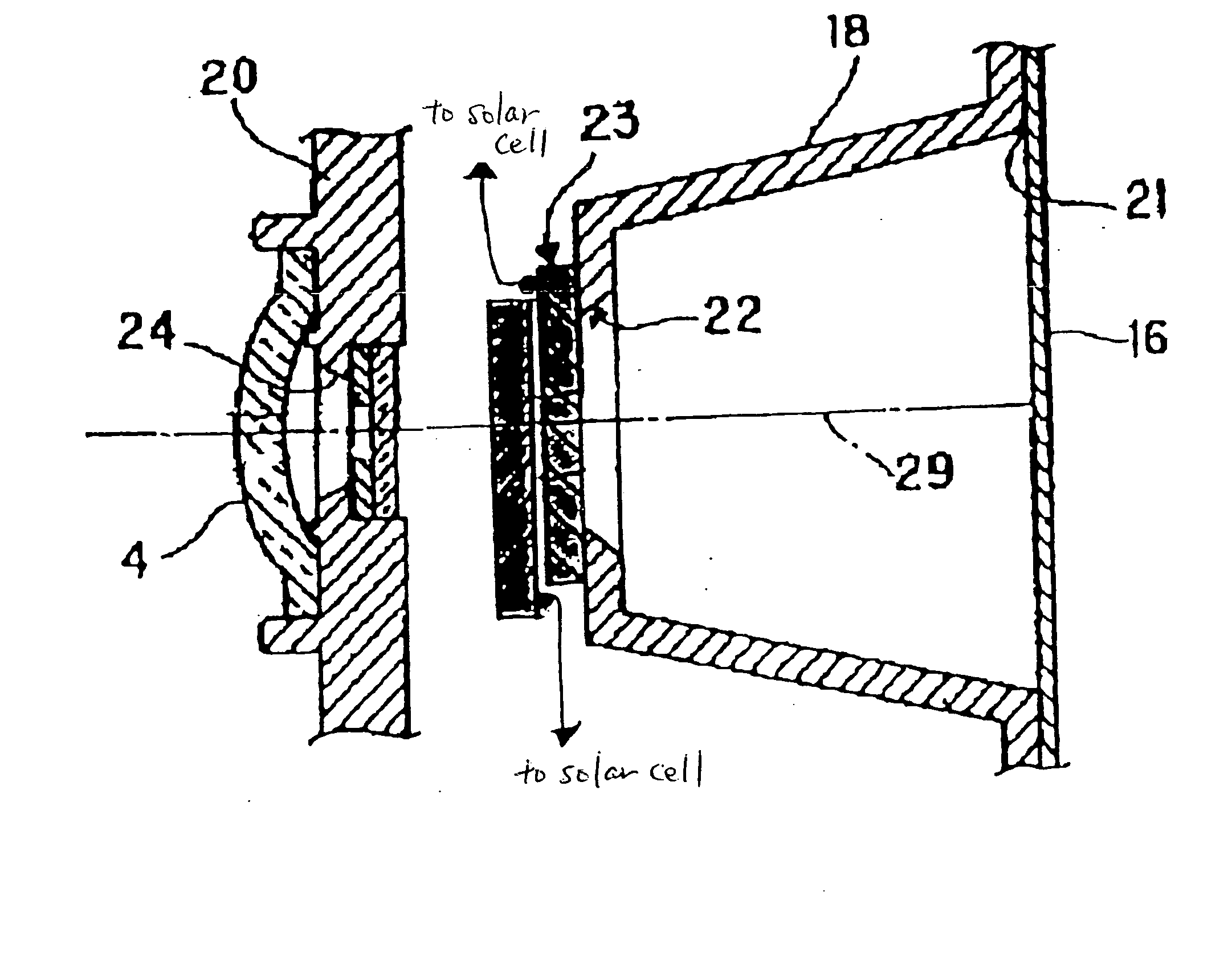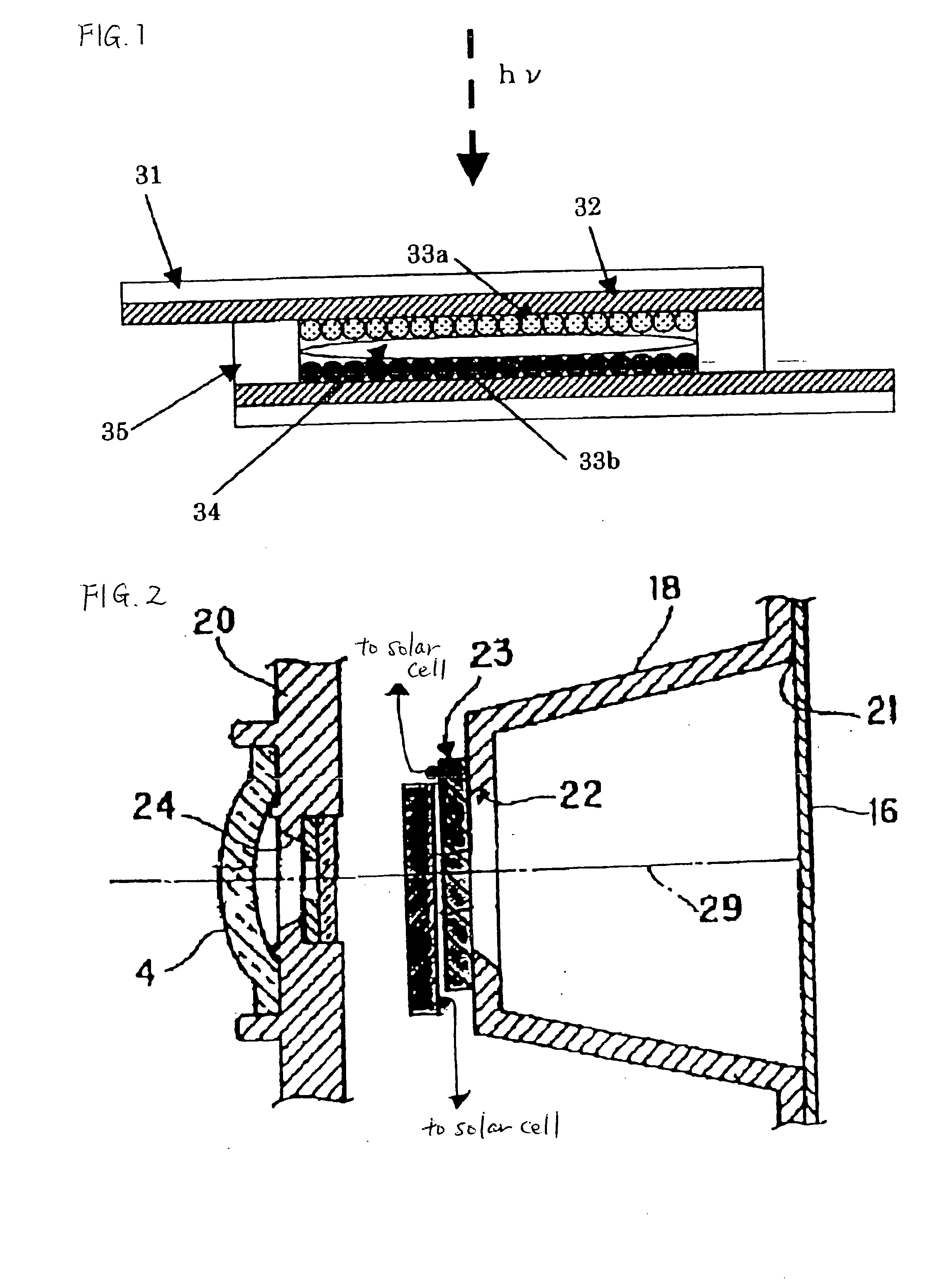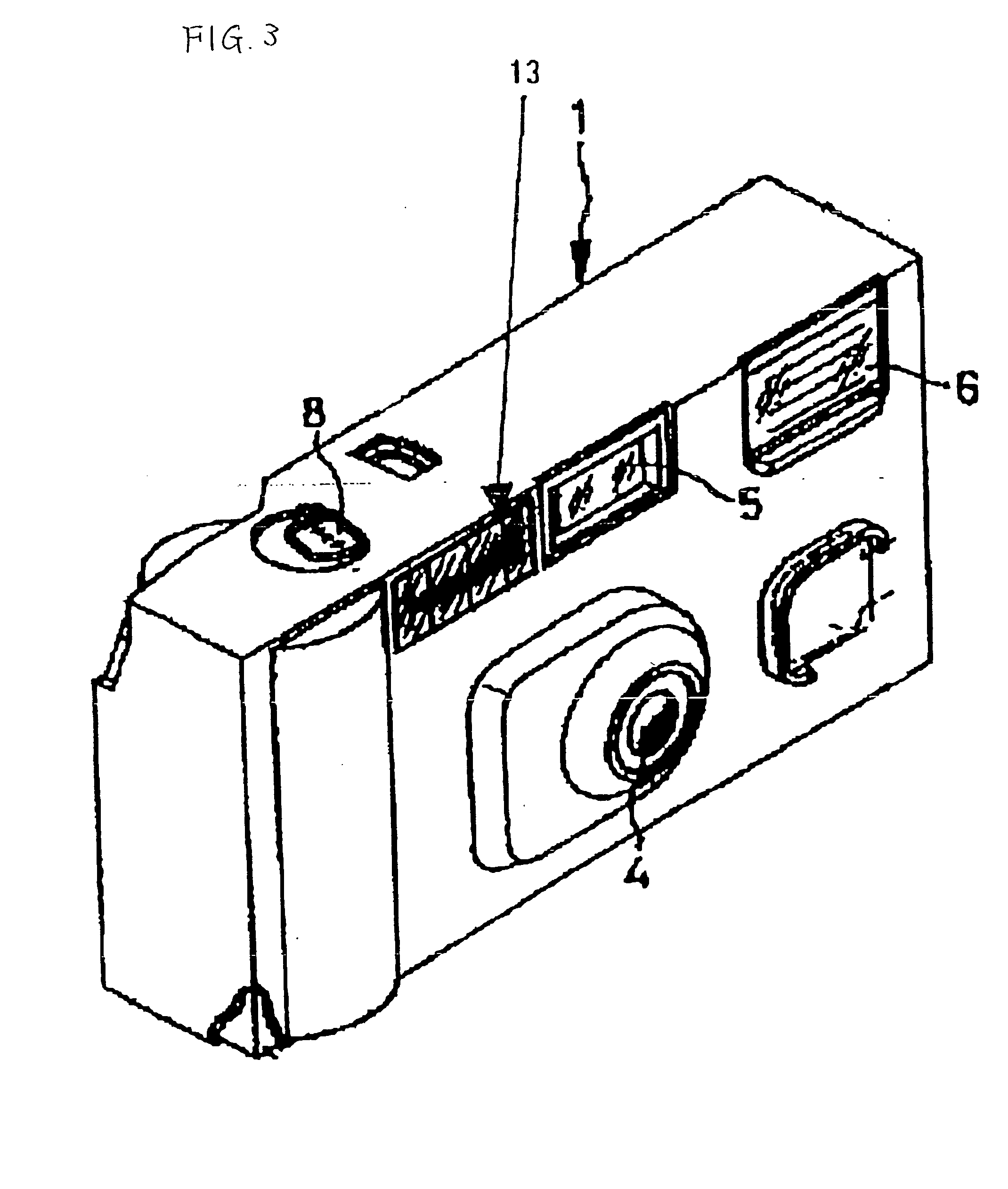Optical density-changing element, optical element and photographic unit
- Summary
- Abstract
- Description
- Claims
- Application Information
AI Technical Summary
Benefits of technology
Problems solved by technology
Method used
Image
Examples
example 1
An electrochromic type optical density-changing element of the invention is described below. Its specific form is as shown in FIG. 1.
(1) Preparation of sample 101 (Example)
Sample 101 (Example) was prepared in the order of (i) preparation of a nanoporous tin oxide electrode for cathode, (ii) preparation of a nanoporous tin oxide electrode for anode, (iii) adsorption of a chromic dye and (iv) assembly of an electrochromic element. (i) Preparation of a nanoporous tin oxide electrode for cathode:
Polyethylene glycol (molecular weight: 20,000) was added to an aqueous dispersion of tin oxide having a diameter of about 40 nm, and the mixture was uniformly stirred to prepare a coating solution. As a coating plate, a 0.7-mm thick electrically conductive glass having coated thereon a conductive SnO2-evaporated thin film was used. Additionally, an antireflective film was provided on the opposite side of the transparent conductive glass to the conductive film-deposited side. On the conduc...
example 2
Sample 201 (present invention) and sample 202 (comparative example) as shown in Table 3, were prepared.
TABLE 3ChromicChromic MaterialMaterialon Cathode Side / on Anode Side / NanoporousNanoporousMaterial onFbc − ErMaterial onFba − EoSample No.Cathode Side(V)Anode Side(V)Sample 201V-1 / ZnO0.3 (∘)P-1 / SnO2−0.15 (∘)(presentinvention)Sample 202V-1 / V2O51.6 (x)P-1 / SnO2−0.15 (∘)(comparativeexample)
Properties of the sample 201 (present invention) and the sample 202 (comparative example) were examined. When a voltage of 1.5 V was applied to the sample 201 (present invention), an optical density at 610 nm increased by 1.0 within 30 seconds. Subsequently, the two electrodes were short-circuited, and the color was completely bleached within 20 seconds. On the other hand, when a voltage of 1.5 V was applied to the sample 202 (comparative example), an optical density at 610 nm increased by 0.5 after 30 seconds. Also, even when the two electrodes were short-circuited, it took 1 minute or longer for ...
example 3
Sample 301 (present invention) and sample 302 (comparative example) as shown in Table 5 were prepared.
TABLE 5ChromicChromic MaterialMaterialon Cathode Side / on Anode Side / NanoporousNanoporousMaterial onFbc − ErMaterial onFba − EoSample No.Cathode Side(V)Anode Side(V)Sample 301V-1 / SrTiO3 0.3 (∘)P-1 / SnO2−0.15 (∘)(presentinvention)Sample 302V-1 / ZrO2−1.0 (x)P-1 / SnO2−0.15 (∘)(comparativeexample)
Properties of the sample 301 (present invention) and the sample 302 (comparative example) were examined. When a voltage of 1.5 V was applied to the sample 301 (present invention), an optical density at 610 nm increased by 1.0 within 30 seconds. Subsequently, the two electrodes were short-circuited, and the color was completely bleached within 20 seconds. This is favor (rated as “O”) in view of controlling the electrochromic element. On the other hand, the sample 302 (comparative example) was colored even when no voltage was applied thereto, and an optical density at 610 nm increased. This is n...
PUM
 Login to View More
Login to View More Abstract
Description
Claims
Application Information
 Login to View More
Login to View More - R&D
- Intellectual Property
- Life Sciences
- Materials
- Tech Scout
- Unparalleled Data Quality
- Higher Quality Content
- 60% Fewer Hallucinations
Browse by: Latest US Patents, China's latest patents, Technical Efficacy Thesaurus, Application Domain, Technology Topic, Popular Technical Reports.
© 2025 PatSnap. All rights reserved.Legal|Privacy policy|Modern Slavery Act Transparency Statement|Sitemap|About US| Contact US: help@patsnap.com



